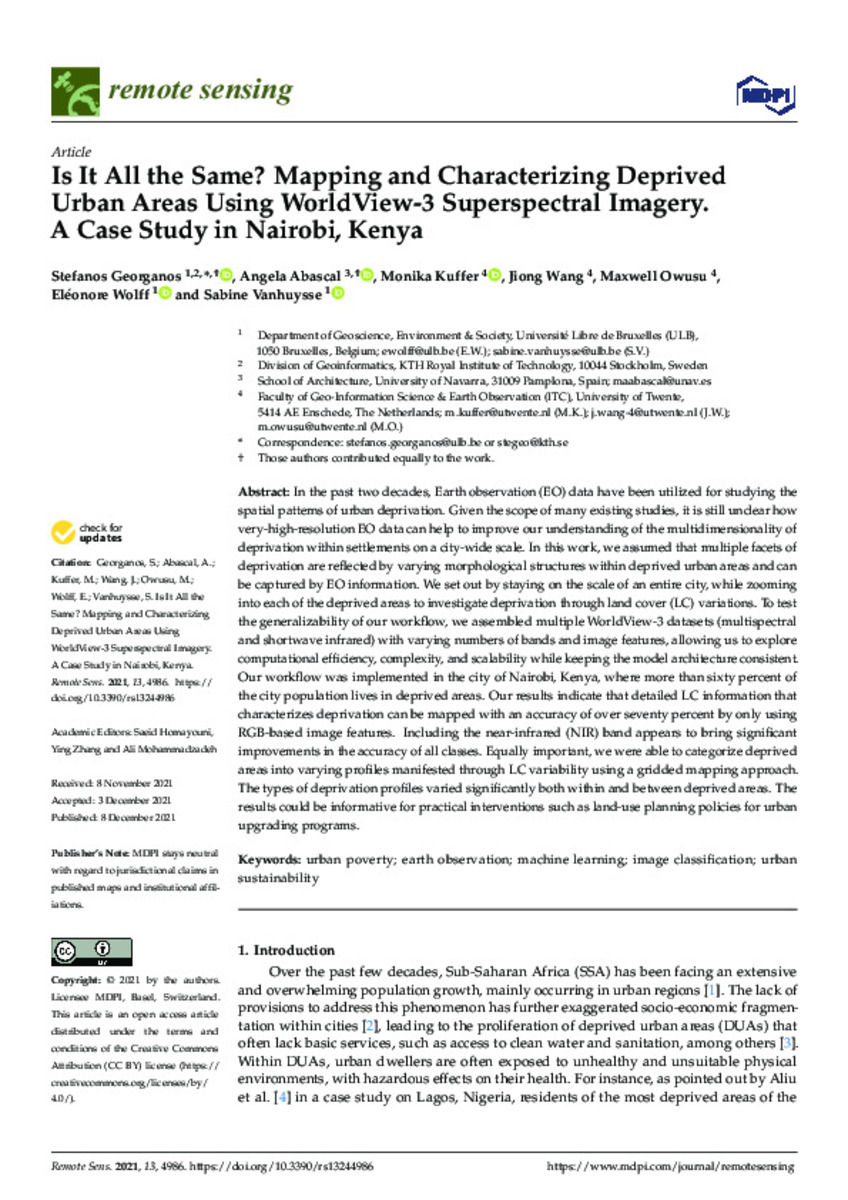Is it all the same? Mapping and characterizing deprived urban areas using worldView-3 superspectral imagery. A case study in Nairobi, Kenya
Keywords:
Urban poverty
Earth observation
Machine learning
Image classification
Urban sustainability
Editorial note:
This is an open access article distributed under the Creative Commons Attribution License which permits unrestricted use, distribution, and reproduction in any medium, provided the original work is properly cited
Citation:
Georganos S, Abascal A, Kuffer M, Wang J, Owusu M, Wolff E, Vanhuysse S. Is It All the Same? Mapping and Characterizing Deprived Urban Areas Using WorldView-3 Superspectral Imagery. A Case Study in Nairobi, Kenya. Remote Sensing. 2021; 13(24):4986.
Statistics and impact
0 citas en

0 citas en

Items in Dadun are protected by copyright, with all rights reserved, unless otherwise indicated.







